Let’s Talk About Sesame Oil and Sesame Paste
Rich, nutty and fragrant Chinese kitchen mainstays and how to use them
When putting together a list of ingredients to feature for a "Chinese Pantry Talk," I found myself lingering on sesame oil, wondering if it could really carry an entire piece. To be honest, I don’t think about sesame oil and sesame paste as often as I do chili oil or doubanjiang. They’re reliable staples in my kitchen — I grab a trusted brand and stick with it. A bottle of sesame oil can last me a few months, while sesame paste stretches even longer, often over a year. Unless, of course, there’s a Sichuan hot pot party in the works. In that case, at least one or two bottles of sesame oil are non-negotiable for the dipping sauce.
As a Sichuan native who likely consumes more sesame oil per capita than most, this feels like obligatory. (Fun fact: there’s even a sesame oil museum in Sichuan! I’ll have to add it to my travel list and report back.)
While the flavor of sesame oil can be subtle or occasionally overshadowed in a dish, it remains an essential Chinese condiment, deeply integrated into regional cuisines and widely used across East Asia. I’ve included sesame paste here as well, as it’s made from the same base ingredient—toasted sesame seeds—but undergoes a slightly different production process, skipping the oil extraction and filtration steps.
Sesame Oil
What is sesame oil?
In Chinese cooking, "sesame oil" almost always refers to toasted sesame oil, made from toasted sesame seeds. It’s known as xiangyou (香油, "fragrant oil") and mayou (麻油) in Mandarin1 and is often translated as "dark" or "roasted" sesame oil in English. This flavoring oil is amber to reddish-brown in color, with an intense nutty and toasty aroma. One of the earliest crop-based oils, its history in China can be traced back to the 6th century, as recorded in the agricultural text Essential Techniques for the Welfare of the People (Qinmin Yaoshu, 齐民要术), written after sesame crops were introduced to China during the Han Dynasty.
Traditionally, sesame seeds are handpicked, selected, toasted, and ground into solids, from which the oil is then extracted. In the past, sesame oil and paste were produced in small local mills (you can still find some in the farmers’ markets). While mass-produced sesame oils dominate the market today, some heritage brands still stick to traditional techniques and make what’s known as small-mill sesame oil (小磨香油). In this process, seeds are ground using a stone mill, and the oil is extracted via the water-extraction method2. This lower-temperature process results in a more fragrant oil with a deep red color. By contrast, most supermarket sesame oils are machine-pressed (jizha xiangyou, 机榨香油).
How to Use Sesame Oil
Sesame oil is mostly used as a flavoring rather than a cooking oil because it has a low smoke point (177ºC/350ºF) and can become bitter and rancid when heated too long. However, in specific dishes, such as Taiwanese sesame oil chicken (mayouji, 麻油鸡), it is used to fry ginger slices at a low heat. Typically, just a small amount adds incredible aroma, though it can be used more generously in certain cases — for example, as a dipping sauce for Sichuan hot pot. In this instance, it’s paired with crushed garlic, scallions, and a pinch of salt and MSG. Counterintuitively, this is believed to "cut through" the fattiness of the beef-tallow-based soup. (That said, most hot pot restaurants use a mixed sesame oil for economic reasons.)
Sesame oil is incredibly versatile and can be used in many ways:
To dress cold dishes:
The simplest way to dress fresh or blanched seasonal vegetables (like broccoli or green beans) is with a splash of sesame oil, salt, and/or soy sauce. In Sichuan cuisine, sesame oil is indispensable in complex flavor combinations like ginger sauce flavor (姜汁味) or garlic sauce flavor (蒜泥味), as used in dishes like gingery beans and smashed cucumber salad.
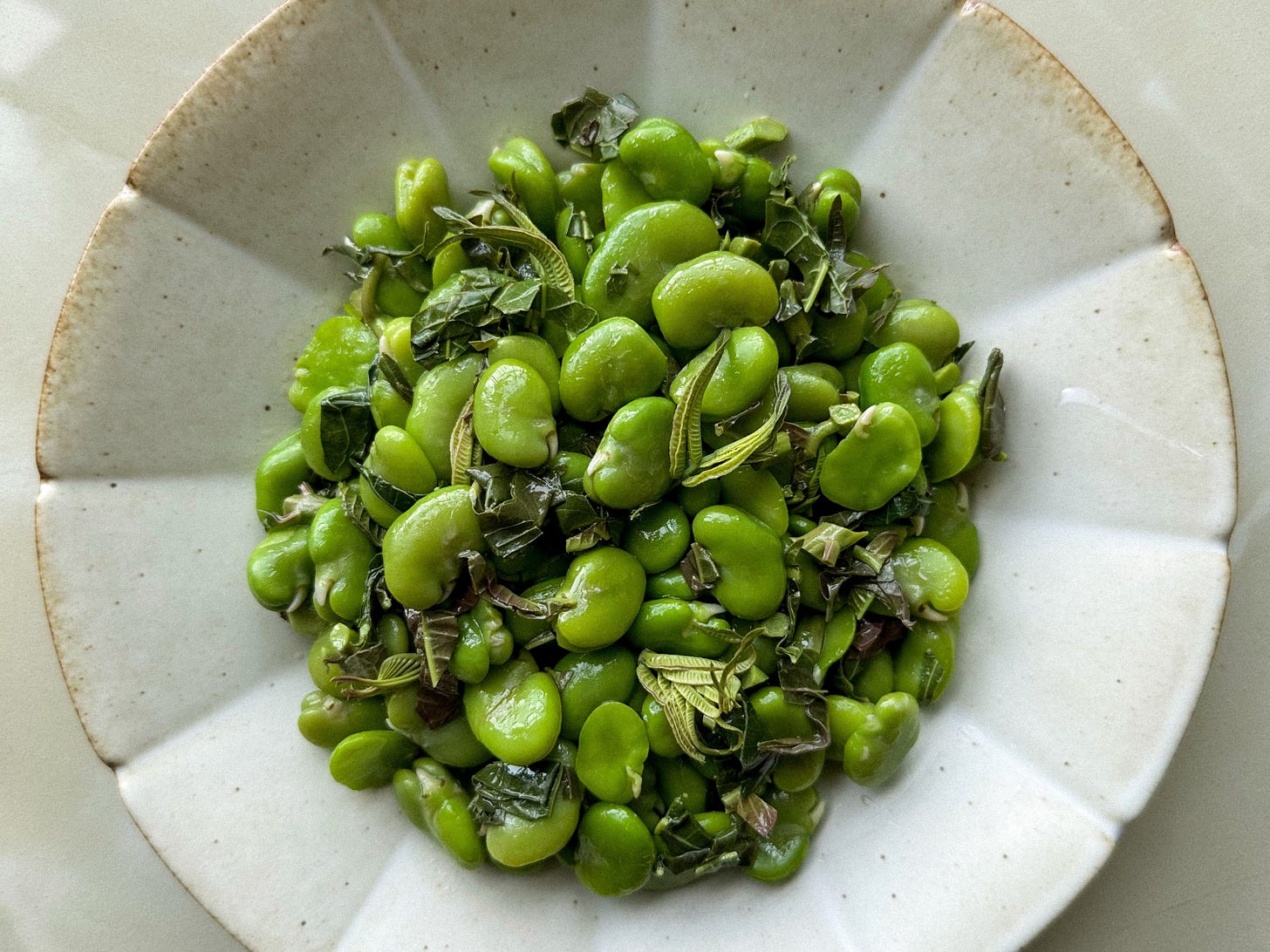
To finish soups, noodles, and congee:
I like to top warm soupy dishes with a splash of sesame oil. A simple noodle soup (清汤面) often has a bowl sauce with sesame oil, light soy sauce, salt and white pepper.
To season dumpling fillings:
A small amount of sesame oil not only adds aroma to dumpling and wonton fillings but also improves their texture.
As a dip for dumplings or pancakes:
Sesame oil mixed with garlic, vinegar, and/or chili oil is a traditional dip for Beijing-style zucchini pancakes.
To add aroma in stir-fries:
Just a drop or two at the end of cooking off heat, can elevate fried noodles or rice.
How to choose sesame oil
Small-mill sesame oil is widely available outside China (I’ve found it in Germany and the U.S.). When choosing sesame oil, look for labels that indicate it’s made purely from sesame seeds, without added oils (often labeled as "100% sesame oil"). The oil should have a dark color and a clear consistency. As with coffee beans, darker sesame oils have a nuttier, more intense flavor, although the preference for light or dark oil depends on personal taste. Labels like "cold-pressed" or "naturally pressed" are good indicators of quality. I’ve been enjoying brands like Chee Seng (more balanced) and the Japanese one Kuki (more intense). Note that Japanese, Korean and Chinese sesame oil can be used interchangeably as long as they’re toasted.
Store sesame oil in a cool, dark place, away from sunlight. Once opened, it will gradually lose fragrance, so it’s best consumed within a few months.
Black Sesame Oil
I rarely use black sesame oil, but out of curiosity, I picked up a bottle from LeeKum Kee recently. Made from black sesame seeds (with the hulls on), this type of oil is darker and has a slightly earthier aroma — though the difference is subtle. It’s commonly used in dishes like sesame oil chicken soup or ginger duck soup (jiangmuyan, 姜母鸭) for its nourishing properties, particularly during cold weather or postpartum recovery, as recommended in traditional Chinese medicine.
Sesame Paste
What is sesame paste?
Similar to other seed butters, sesame paste is a creamy, thick paste made from ground toasted sesame seeds, sometimes with added oil. Known as zhimajiang (芝麻酱) or majiang (麻酱) in Chinese, sesame paste was first recorded during the Song Dynasty and popularized during the Qing Dynasty. It has a light brown or beige color, a rich nutty aroma, and comes in jars often topped with a layer of sesame oil.
This versatile condiment is rich in fat and calcium and is commonly used as a seasoning for cold dishes, a coating for noodles (like Wuhan’s hot and dry noodles, 热干面), or a dip for Beijing-style lamb hot pot. It also makes its way into sweet pastries, such as sesame paste-filled shaobing (麻酱烧饼), or desserts.
The flavor of the sesame paste is more potent than the oil and often paired with more simple ingredients like salt, MSG, sugar, soy sauce to create the salty and umami flavors (咸鲜味). One of my favorite combination is to mix sesame paste with fermented tofu, which is used in also the dip for lamb hot pot, but I learnt from a recipe from the Chinese author Chen Yuhui to use this marinate chicken in stir-fries.
How to use sesame paste
The paste itself can be very thick, so to use it, you’ll need to thin it out by whisking it with sesame oil or water (warm water works best). The oil is richer and water will on the other hand dilute the flavor a bit. In my experience, the first half of the jar is relatively easy to work with as it comes with oil, but the deeper you dig into the jar, the harder it becomes to smooth out the paste — it takes patience. Add the liquid slowly and whisk constantly until the desired consistency is achieved, which is typically similar to thin yogurt.
Here are some ways to use sesame paste:
To dress cold dishes:
In Sichuan cuisine, there’s a classic flavor combination called majiang wei (麻酱味), which uses sesame paste as the base. It’s typically mixed with sesame oil, salt, MSG, and sometimes soy sauce or chili oil to dress refreshing and crisp vegetables, such as cucumber, celtuce leaves, or long-stemmed spinach.
To coat noodles:
Sesame paste is the important ingredient in noodle dishes like Sichuan cold noodles, sweet water noodles and Dan Dan noodles. If you’re the fan of creamy noodles, you can always add to your noodle dressing 1 teaspoon of sesame paste.
To add creaminess to sauces:
Even in dishes where sesame isn’t the main flavor, a small amount of sesame paste can thicken the sauce and help it cling better to the ingredients — for example, in mouthwatering chicken (kou shui ji, 口水鸡).
As a dip for hot pot or malatang
Sesame paste is a must-have dipping sauce for Beijing-style lamb hot pot, or Nothern-Chinese style individual hot pots like malatang (麻辣烫), although in Sichuan the combination of sesame paste and hot pot is often frowned upon.
How to Choose Sesame Paste
The most common sesame paste is made from white sesame seeds, which is typically used for savory dishes. You can also find black sesame paste, which is often reserved for sweet dishes.
In Chinese grocery stores, you’ll find two main types of white sesame paste: pure sesame paste or mixed sesame paste blended with peanut butter. The mixed variety originated from lamb hot pot restaurants and became a popular commercial product. Peanut butter adds sweetness and balances any bitterness, while also creating a smoother texture.
Personally, I don’t mind using mixed paste for some recipes, though I prefer an 80/20 blend of sesame paste and peanut butter (erbajiang, 二八酱). Fifty-fifty blends are also available. When it comes to brands, I typically choose Wangzhihe王致和, Liubiju六必居, or Sanfeng Xiangyou三丰香油. Once opened, store sesame paste in the fridge, where it will last a long time.
Chinese Sesame Paste vs. Tahini
At first glance, Chinese sesame paste and tahini seem similar, but they have key differences. Tahini is usually made from raw or lightly toasted sesame seeds, giving it a lighter color and a milder, slightly bitter flavor. In contrast, Chinese sesame paste is made from toasted sesame seeds, resulting in a more intense nutty aroma and deeper flavor.
I don’t use tahini and Chinese sesame paste interchangeably. That said, if you don’t have access to Chinese sesame paste, you can approximate its flavor by mixing tahini with a small amount of sesame oil and peanut butter. Interestingly, in *The Wok*, Kenji López-Alt suggests frying tahini as a substitute.
Making sesame paste at home
If sesame paste isn’t available in your local Asian market and you can make it yourself. Toast white sesame seeds in a dry pan until golden and fragrant, then grind them in a food processor into a paste. If it’s too dry, blend while streaming in sesame oil by spoons or another neutral vegetable oil until a thick, creamy paste forms.
On some Taiwanese websites, mayou refers specifically to pure sesame oil, while xiangyou refers to mixed sesame oil. This distinction is not commonly made on the mainland.
Also known as the water replacement method (shui dai fa, 水代法), this technique involves adding water to ground, toasted sesame paste. The difference in density between oil and water allows the oil to separate naturally from the paste. The extracted oil then undergoes filtration, sedimentation, and other steps before it becomes sesame oil.

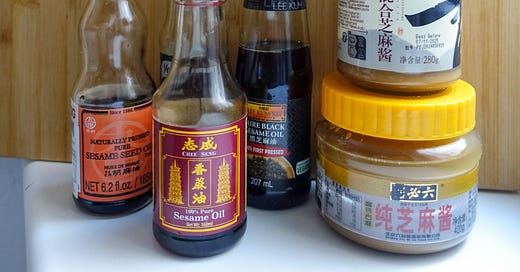


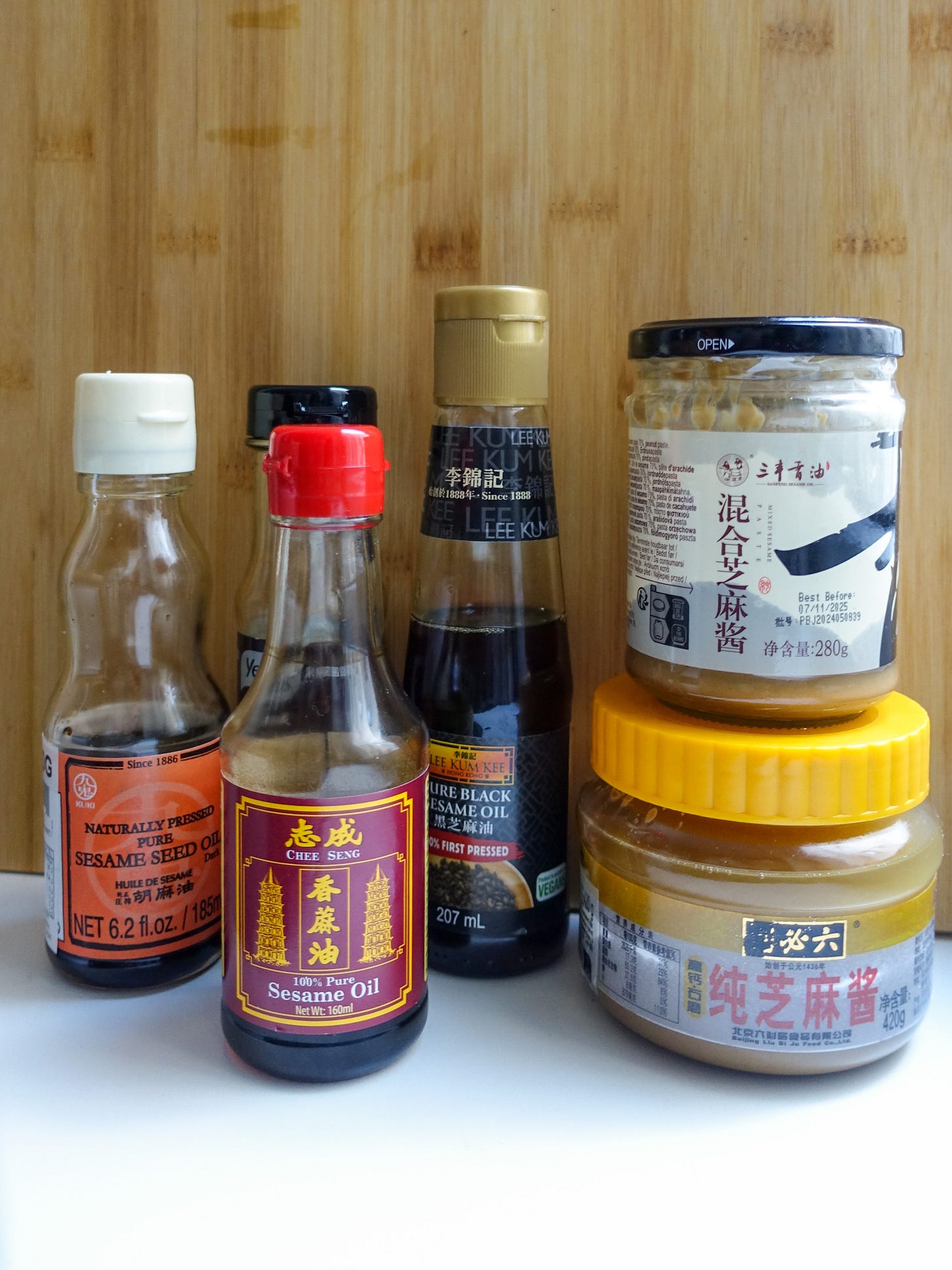
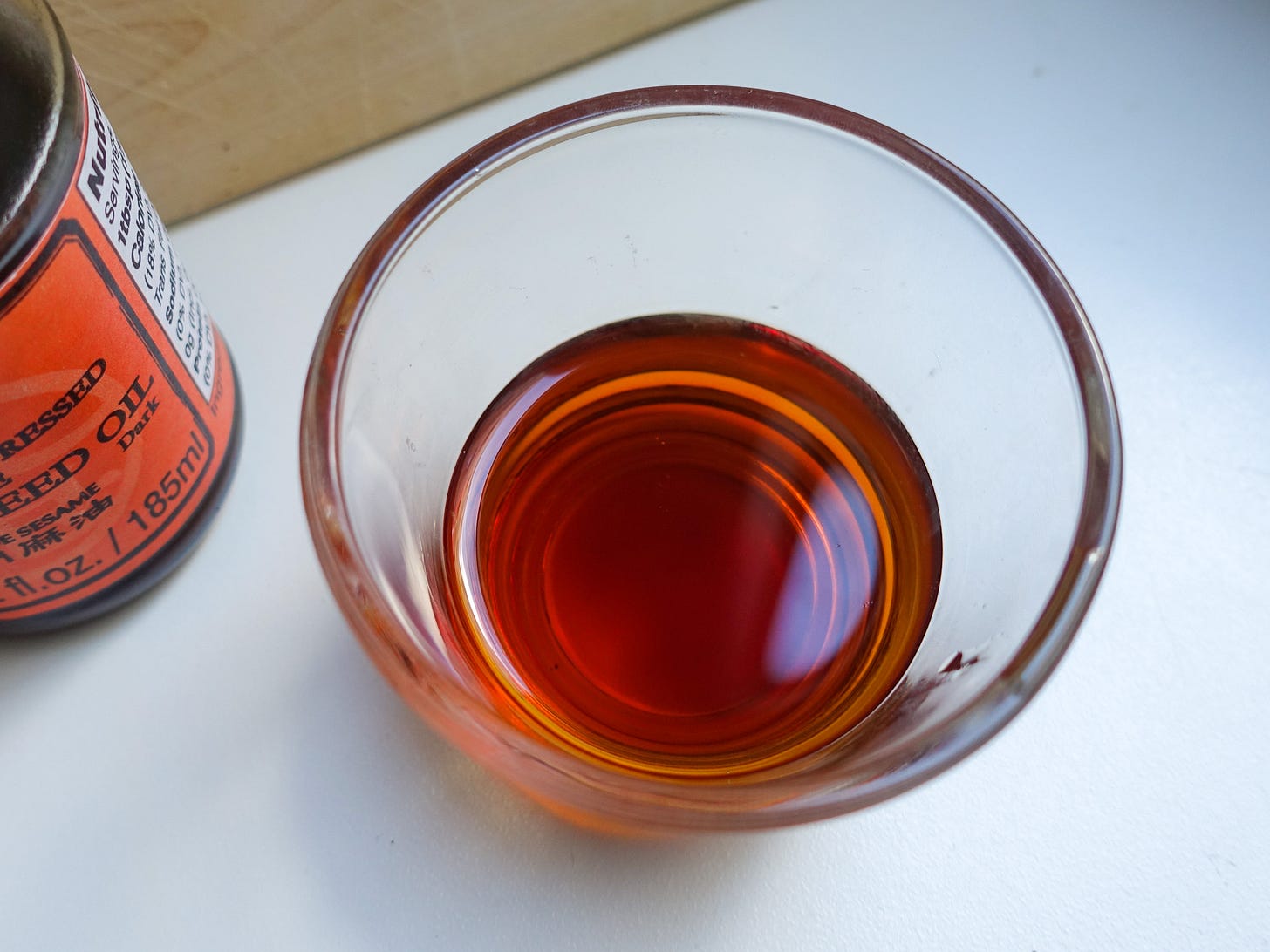
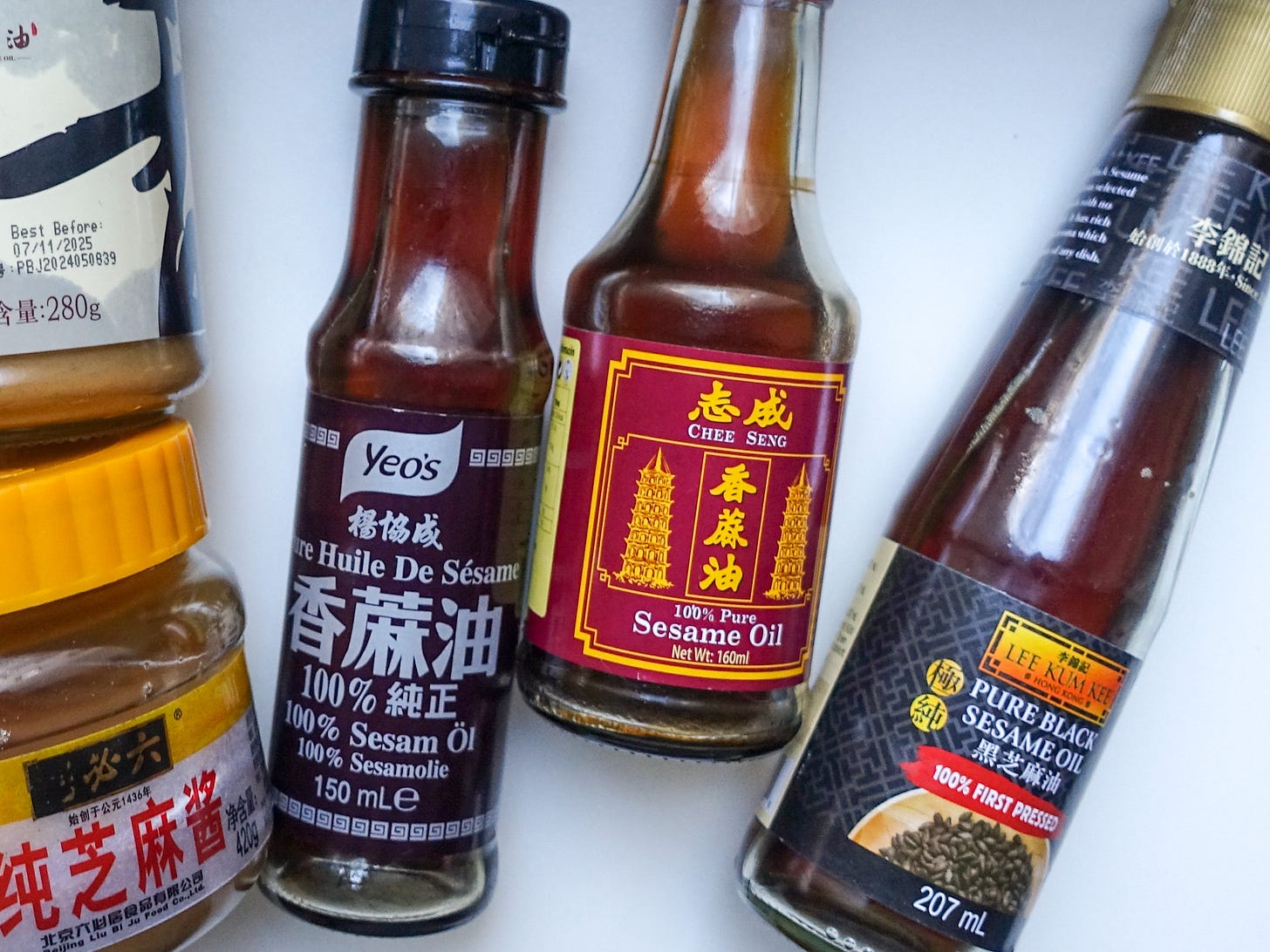
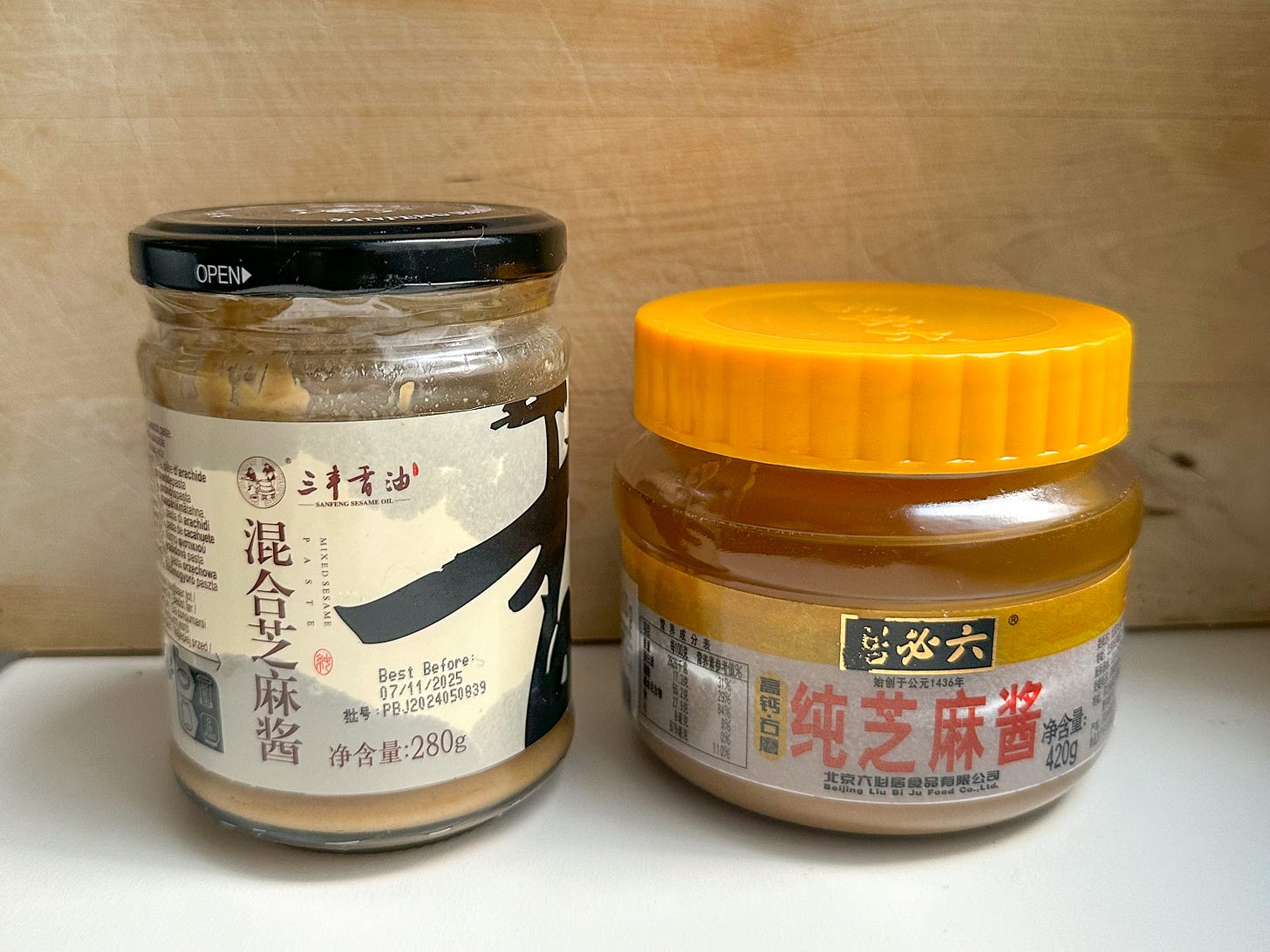
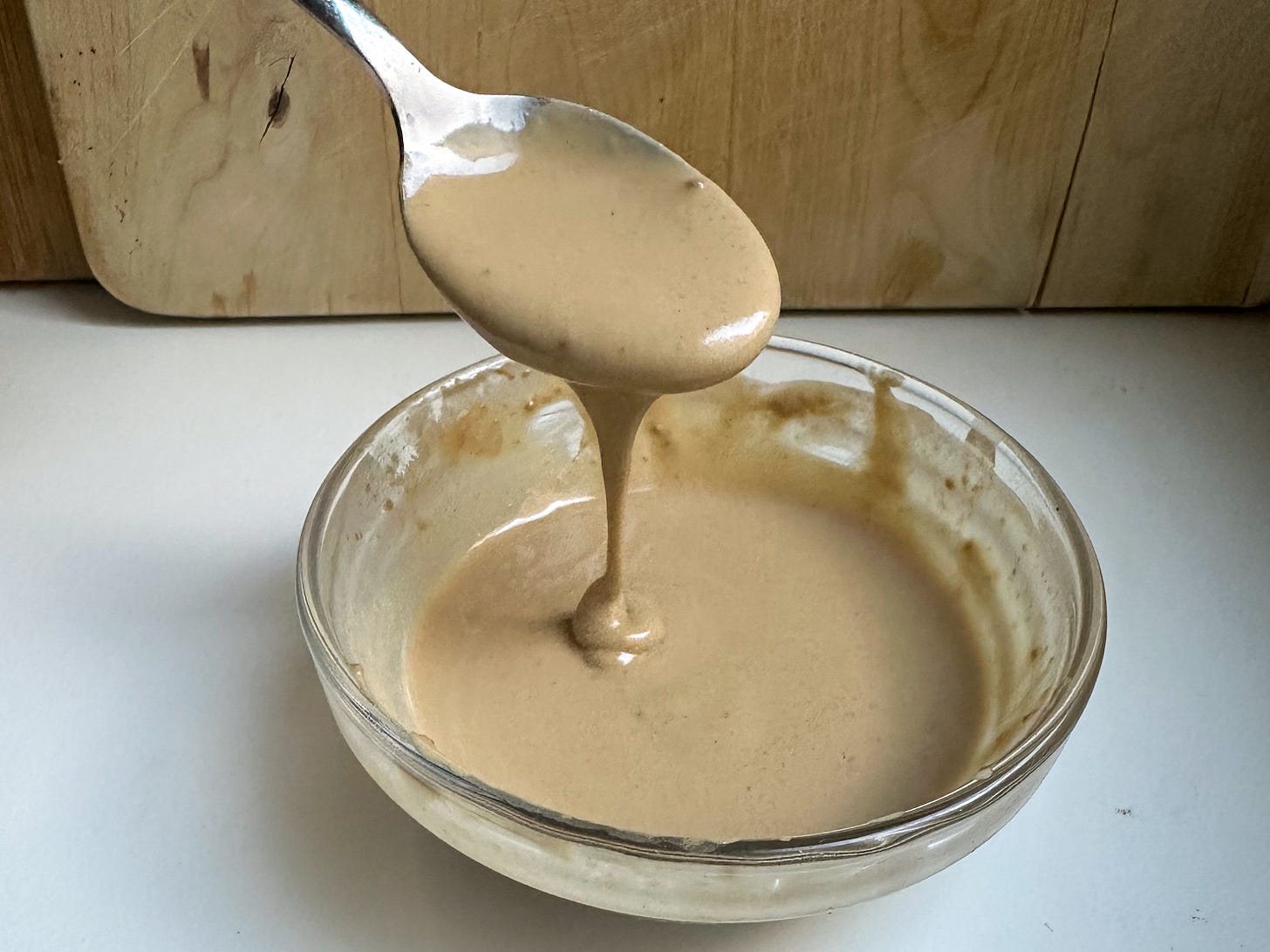
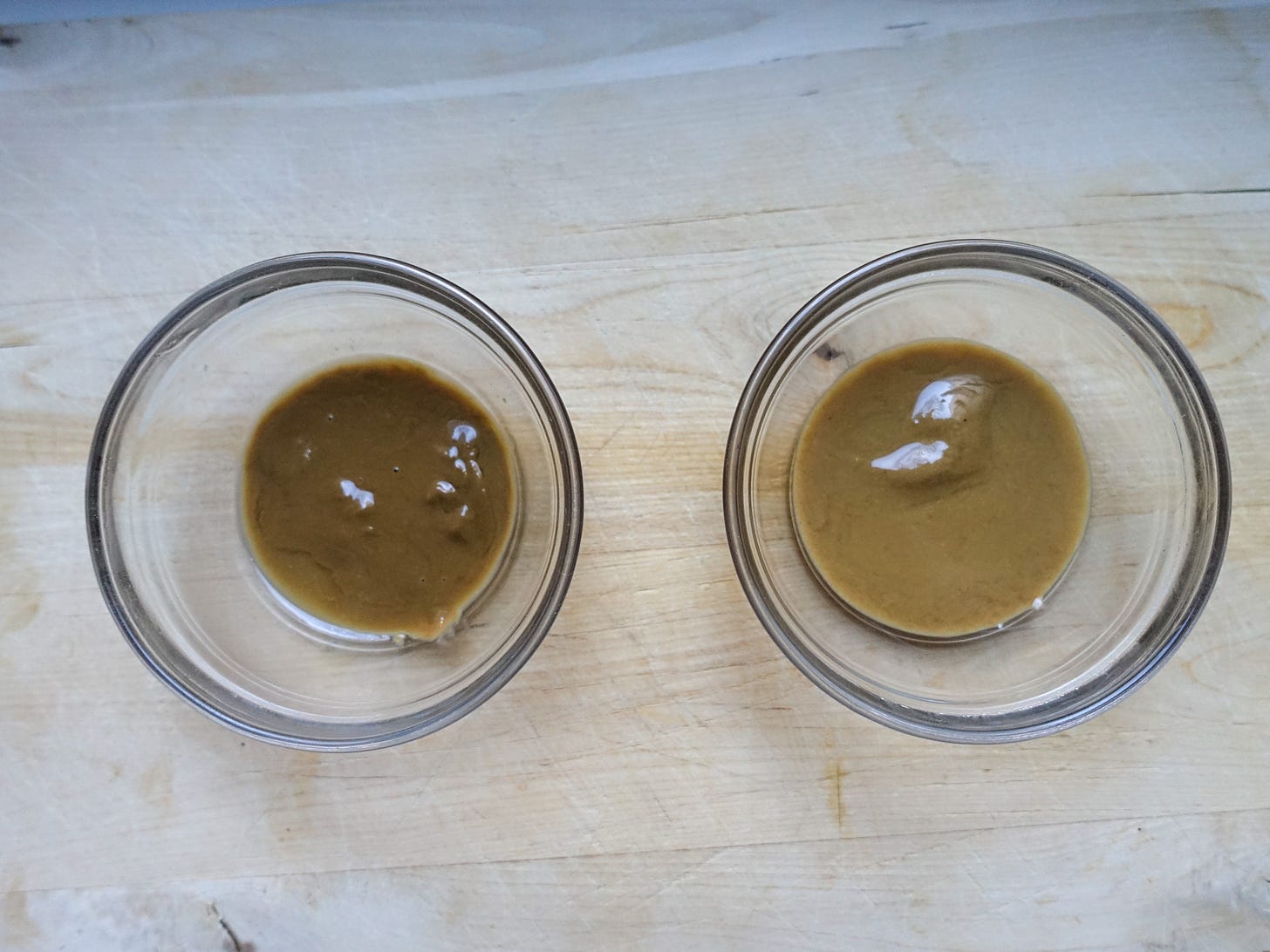
Phenomenal article, and I especially like the bits of history behind it. This comes at a perfect time as I am currently reading Invitation to a banquet: the story of Chinese food by Fuchsia Dunlop. Thank you and I’m looking forward to reading your other articles and recipes!
Great information! I've used sesame oil, but never the paste. You've encouraged me to try it. Thank you.